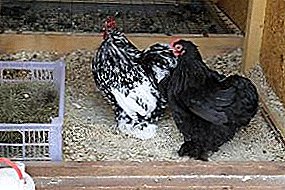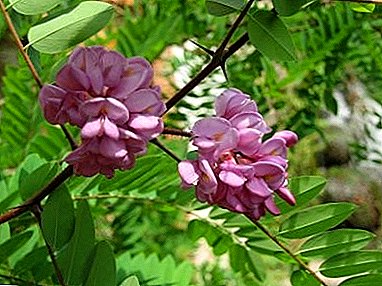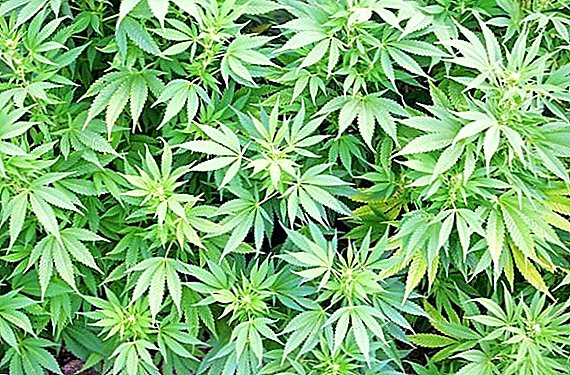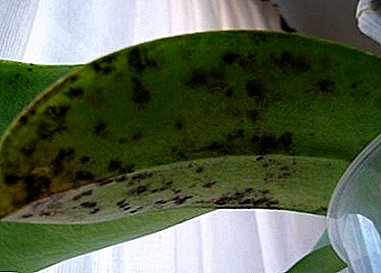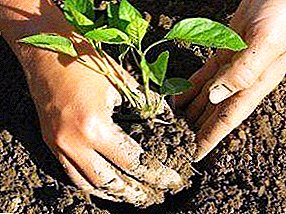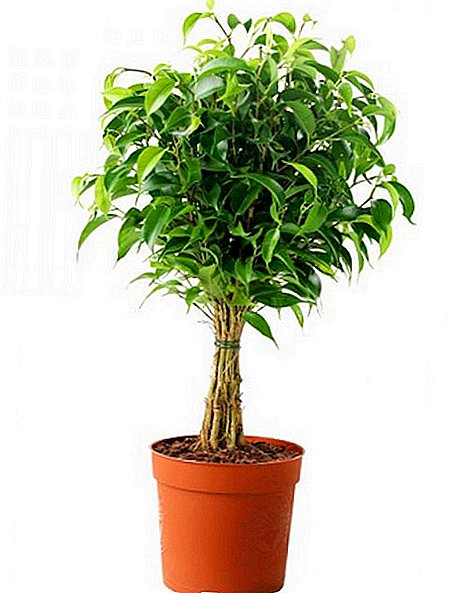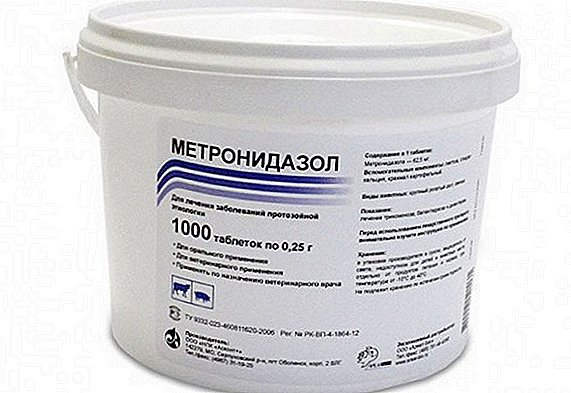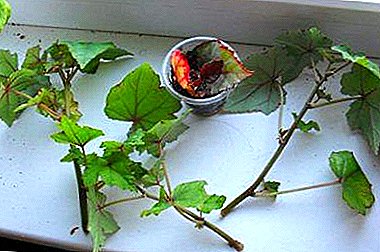
Cherenkovy - one of the most popular flower growers favorite method of breeding begonias. It is quite simple and effective: even a novice flower lover can separate the stalk from the begonia, root it, and already after 3 - 4 months enjoy the beauty of a flowering new plant. Details on this breeding method can be found in this article. We will tell you how to propagate begonia at home, how the grafting process takes place, how to prepare for it, how to plant and root the cuttings, as well as on the subsequent care and possible problems.
How to multiply at home?
Begonia breeds in the following ways.:
- Seeds.
- Leaf.
- Cuttings.
- Tubers.
- The division of the bush.
Reference! The cutting is the separated part of the plant (leaf, sprout), and grafting is vegetative reproduction using a cutting. The advantage of this method of breeding begonias is the inheritance of all the qualities of the mother plant, including the color of flowers and leaves.
How to cutting?
Time
Despite the fact that cutting can be carried out at any time of the year, it is better to wait for spring. The fact is that in the spring, begonia enters the active phase of vegetation: new cells begin to form intensively due to the acceleration of metabolic processes occurring in it. The trigger mechanism for the active growth of the plant - favorable weather conditions (plenty of sun, warm), which replaced the winter.
Varieties of planting material
Begonias have several types of cuttings.: leafy, apical, stem.
- The leaf stalk is a separate leaf of the begonia, which, after rooting, can be planted in a pot. As an option: the begonia leaf is cut into pieces, and the resulting fragments are planted in the ground for rooting.
- The apical stalk is a sprout cut from the mother plant, which subsequently takes root.
- From under the substrate, stem cuttings may begin to emerge actively in August – September. They are well suited for rooting, often they are already with roots, which will greatly facilitate the process of plant reproduction.
Training
- Leaf stalk.
 One healthy, medium-sized or large-sized begonia leaf is selected. To prevent the occurrence of infectious diseases, it is recommended to treat the leaf with a fungicide.
One healthy, medium-sized or large-sized begonia leaf is selected. To prevent the occurrence of infectious diseases, it is recommended to treat the leaf with a fungicide. - Apical stalk.
A healthy, strong, no visible damage, non-flowering shoot of 8–12 cm long is chosen. The shoot is cut from the begonia bush with a sharp knife obliquely. The cut must be below the node, and on the shoot there must be a leaf or a pair of leaves.
If there are many leaves, then the lower ones must be removed in order to prevent rotting. A cut-off shoot with the same purpose is recommended to be dried in air for several hours.
- Stem stem.
To extract a young sprout from the ground, you need to firmly take hold of its stem and, swaying it in different directions, pull it slowly upwards. It will break off in the "right" place, often with spines.
If the cuttings growing from the substrate are already with buds, then they must be removed: all the strength of the young plant must be spent on the development of the root and deciduous mass.
How to plant?
- After the roots of the cutting, regardless of the method of rooting, reach 0.7 - 1.5 cm in length, it is planted in an individual pot.
- The bottom of the tank (there must be a hole in it to drain the water) is filled with drainage (expanded clay, pebbles, broken bricks), and then with a substrate.
- Having made a dimple in the ground with a hand, place the seedling in the pot, gently straightening its roots, if rooting was previously performed in water.
The best method of planting for young seedlings rooting in the ground - the method of transshipment:
- The plant comes from the tank and, without shaking off an earthy coma, is placed in a new pot.
- The top layer of soil at the stem is crushed by hands, the plant is watered and put in its place.
Reference! Ground for begonias should be loose and light. The easiest option is to buy a ready-made substrate in a flower shop.
You can make the necessary mixture with your own hands. There are several recipes for homemade soil.:
- Soddy soil, humus, peat, vegetable compost and a little river coarse sand are mixed in equal proportions.
- A mixture of peat and coarse sand is used in a 1: 1 ratio. In this mixture, you can add a little humus.
How to root?
Leaf
 A large sheet of begonia is cut into fragments in the form of a triangle, each of which must consist of 1 - 2 veins.
A large sheet of begonia is cut into fragments in the form of a triangle, each of which must consist of 1 - 2 veins.- Sections are processed with crushed activated charcoal, you can and "root".
- Further, each of the segments is buried in the moistened substrate by 5–7 mm, the upper layer of the soil is slightly crushed by the hands for better fixation of the planted parts of the sheet.
As an option: the begonia leaf is incised across the veins in several places and placed on a moist substrate, while it must be pressed onto the surface with small pebbles or toothpicks.
Medium sized leaf can be rooted in water.. To do this, the leaf with the stem is placed in a container with water, in which the tablet of activated carbon was previously dissolved. In the vessel leaf stalk is until the appearance of the roots.
The tip
It can also be rooted in two ways: in water or immediately in the ground.
- An escape rooted in water is immersed in a liquid poured into a vessel made of dark glass or plastic. Do not fill the entire tank with water: it should be exactly as much as needed to dive only the bottom of the shoot.
In the water you need to dissolve a tablet of activated carbon and a little of the drug - a root growth stimulator ("Kornevin").
- If rooting the stalk in the ground, it should first be dipped in water with a tip, and then in a root formation stimulator. Further, at an angle of 45 degrees, the shoot needs to be buried 2–3 cm in moist soil.
Stem stalks
If the cutting cannot be removed from the substrate with the roots, it should be rooted in water. in the same way as the apical stalk. And if the young shoots already have developing roots, then it can be planted in the ground.
Such conditions can be achieved by placing a container with a handle in a plastic bag, a plastic food container with a tight-fitting lid or in a cut plastic bottle. With the advent of the first roots greenhouse can be removed. But it is also important to remember that such a greenhouse should be opened daily for ventilation, otherwise the escape may simply rot.
What to do after?
 Begonia cuttings already planted in individual pots should be placed in a bright place, and direct sunlight on the foliage of young plants should be avoided. The ideal option is the north, north-west, northeast windows.
Begonia cuttings already planted in individual pots should be placed in a bright place, and direct sunlight on the foliage of young plants should be avoided. The ideal option is the north, north-west, northeast windows.- The optimal temperature for the growth of begonias - + 20C - + 22C.
- A young plant is watered often, but little by little. It is important not to allow excessive moisture in the substrate, otherwise the begonia will die from rotting.
- Spraying is not recommended: begonia does not like water droplets on leaves and flowers. To increase the level of humidity in hot and dry weather, you can place a container with water near the pot, or place the pot in a pan covered with expanded clay, which must be watered periodically with water.
- Top dressing is made by complex mineral fertilizers, bought in flower shops, from spring to autumn 1 - 2 times a month.
If something went wrong
- Growth point of the cutting, which was taken out from under the substrate, began to rot. This happens if the cuttings are taken in the period of active flowering of the mother plant.
Microscopic buds, already appearing on the handle and not yet visible to the naked eye, rotted. This is not terrible, since begonias have many “sleeping” buds in the axils of each leaf, and such a stalk is quite viable. This phenomenon happens quite often.
- Young ampelous begonias show signs of infectious diseases (rot, powdery spots, etc.). For the prevention of this phenomenon, it is recommended to disinfect the soil, the pot into which the cuttings will be planted (fungicide treatment, heat treatment).
- Rotting cuttings. This phenomenon is possible with excessive watering. Also, do not forget about the daily airing of "greenhouses", in which the rooting of the plant.
Having done simple manipulations on the transplantation and reproduction of a plant, you can delight yourself and your loved ones to see the beauty of the blooming begonia for more than one year. The main condition - compliance with all requirements for the care and maintenance of this flower.


 One healthy, medium-sized or large-sized begonia leaf is selected. To prevent the occurrence of infectious diseases, it is recommended to treat the leaf with a fungicide.
One healthy, medium-sized or large-sized begonia leaf is selected. To prevent the occurrence of infectious diseases, it is recommended to treat the leaf with a fungicide. A large sheet of begonia is cut into fragments in the form of a triangle, each of which must consist of 1 - 2 veins.
A large sheet of begonia is cut into fragments in the form of a triangle, each of which must consist of 1 - 2 veins. Begonia cuttings already planted in individual pots should be placed in a bright place, and direct sunlight on the foliage of young plants should be avoided. The ideal option is the north, north-west, northeast windows.
Begonia cuttings already planted in individual pots should be placed in a bright place, and direct sunlight on the foliage of young plants should be avoided. The ideal option is the north, north-west, northeast windows.